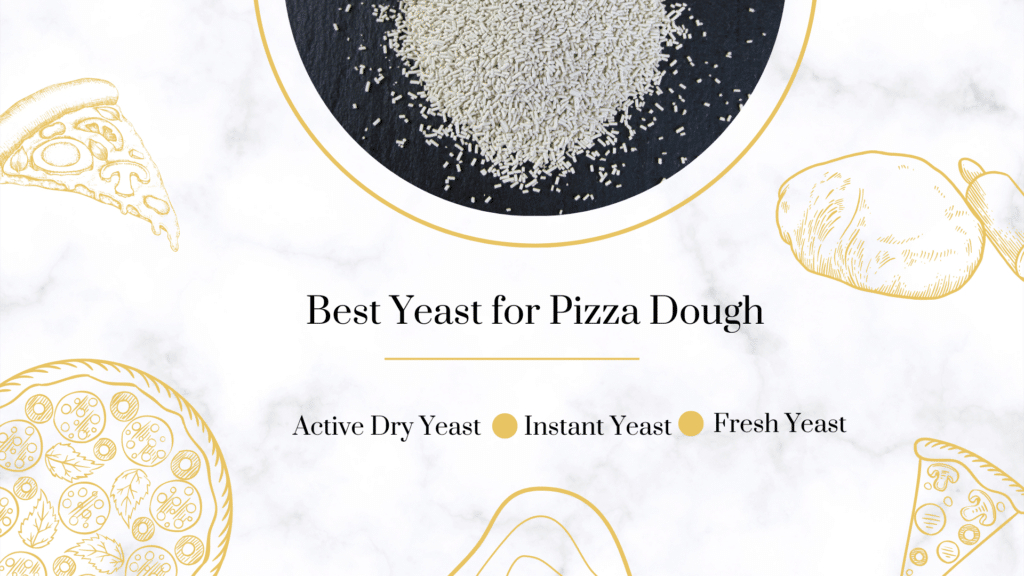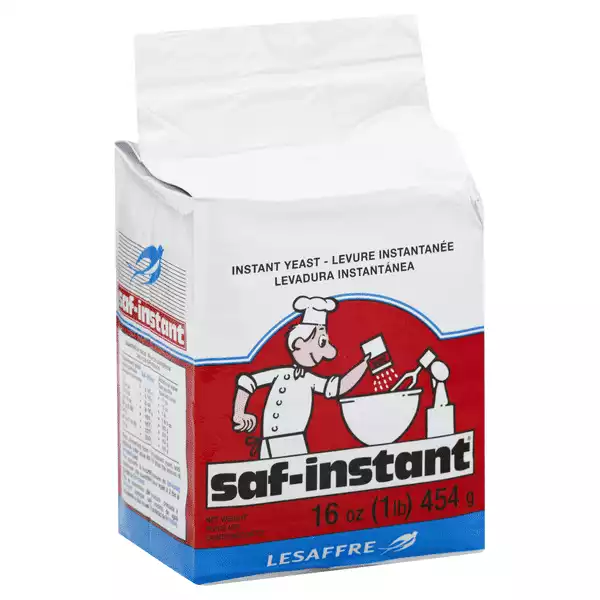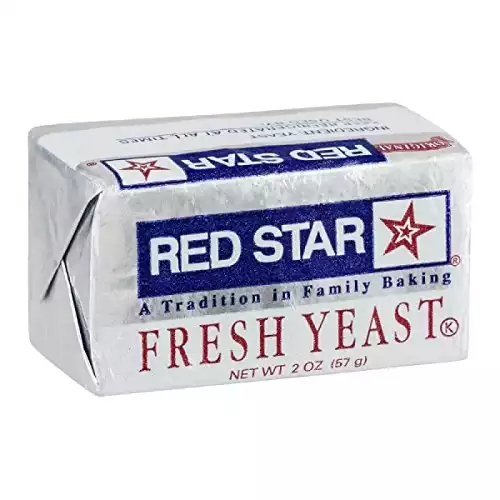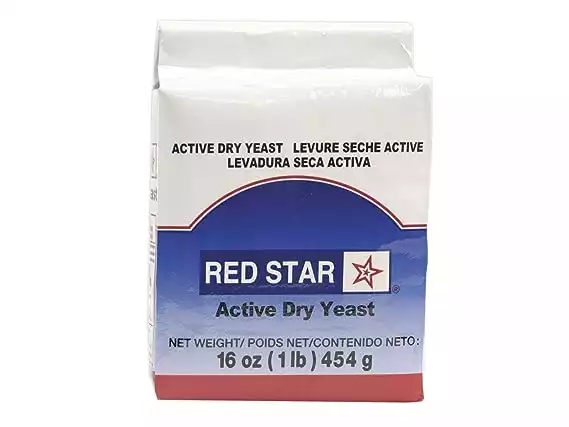What is the Best Yeast for Pizza Dough?
Pizza – merely mentioning this delicious dish is enough to stir cravings. While the toppings, sauce, and cheese often steal the limelight, the show’s real hero is the pizza dough. And the secret behind the perfect pizza dough?
Yeast! The ingredient gives the dough its fluffy, crispy texture and distinct flavor.
Selecting the best yeast for pizza dough is an art, and it can significantly impact your homemade pizza’s taste and texture.
But with various yeasts available in the market, you might wonder, “What’s the best yeast for pizza?” or “What’s the best pizza dough yeast for Neapolitan pizza?”
This article aims to answer these questions and many more, comparing different types of yeast and highlighting the best pizza yeast for various pizza styles.
So, if you’re ready to elevate your pizza-making skills to the next level, keep reading to delve deep into the world of yeast.
Let’s get started!
Here’s What You Will Find:
Key Takeaways
Best Yeast for Pizza Dough
Yeast Type Matters: Choosing between fresh, active dry, and instant yeast can significantly impact your pizza dough’s texture and flavor. Each type has its own strengths and considerations.
Active Dry Yeast is a Safe Bet: Active dry yeast is a reliable choice, offering moderate fermentation speed and balanced flavor. Its activation step also serves as a quality check, ensuring the yeast is alive before making the dough.
Cold Fermentation Enhances Flavor: Regardless of the yeast type you choose, allowing your dough to ferment slowly in the refrigerator will help to develop a more complex, richer flavor profile.
Experiment and Enjoy: The journey to the perfect pizza dough involves experimenting with different yeast types and techniques. Most importantly, enjoy the process and have fun with your pizza-making adventure!
Understanding Yeast
Yeast is a tiny, single-celled organism belonging to the fungi kingdom. It’s been used in baking and brewing for thousands of years due to its unique ability to convert sugar into carbon dioxide and alcohol through fermentation. This fermentation process is what makes bread and pizza dough rise and gives them their characteristic texture and flavor.
But all yeasts are not created equal. There are hundreds of different yeast species, but only a few are suitable for baking, and each one can impart its unique properties to the dough. Some yeast strains work faster than others, some impart a stronger flavor, and others are more resistant to different temperature or humidity conditions.
The most common types of yeast used in baking are fresh yeast (also known as cake or compressed yeast), active dry yeast, and instant yeast (sometimes called fast-rising or bread machine yeast). Each type has its pros and cons, and the best yeast for pizza dough can vary depending on various factors, including your baking method, pizza type, and personal taste.
We’ll delve into these different types of yeast in more detail in the next sections. We’ll also explore the characteristics that make certain yeasts the best yeast for pizza, the best pizza dough yeast for a traditional Neapolitan pizza, and how to properly use the selected yeast for pizza dough.
Types of Yeast for Making Pizza Dough
What Kind of Yeast for Pizza Dough?
Let’s dive into the world of yeasts typically used for making pizza dough. They come in different forms and have their distinct characteristics, making them more suitable for certain styles of pizza than others.
Fresh Yeast
Fresh Yeast, also known as compressed or cake yeast, fresh yeast is widely considered by many professionals to produce the best results due to its high moisture content and active organisms.

This yeast form has a creamy and crumbly texture and is often used in commercial baking. However, it has a short shelf-life and needs to be refrigerated, which may make it less convenient for home use.
Active Dry Yeast
As the name suggests, active dry yeast is a dry form of yeast. It consists of larger granules and needs to be dissolved in warm water before use.
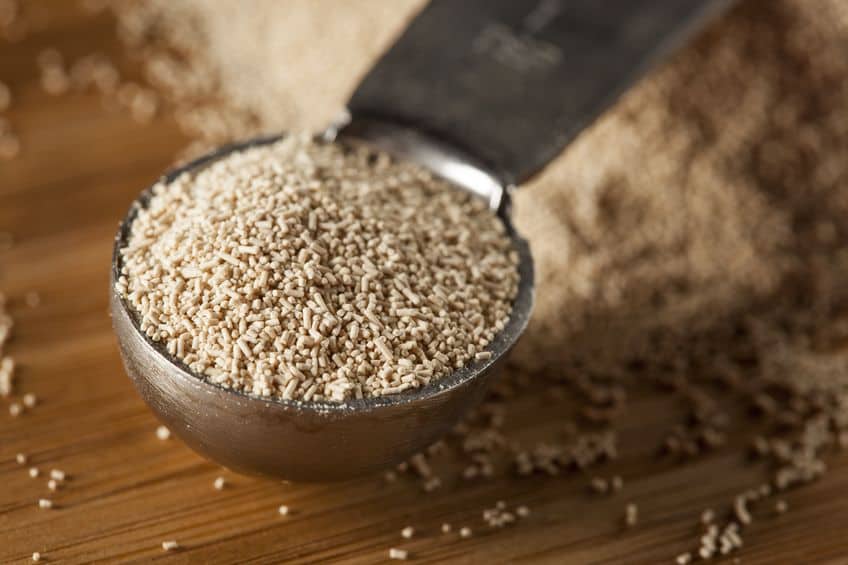
This yeast type is robust and has a longer shelf life than fresh yeast, making it a popular choice for home bakers.
Instant Yeast
Sometimes referred to as fast-rising or bread machine yeast, instant yeast is a more potent form of dry yeast.
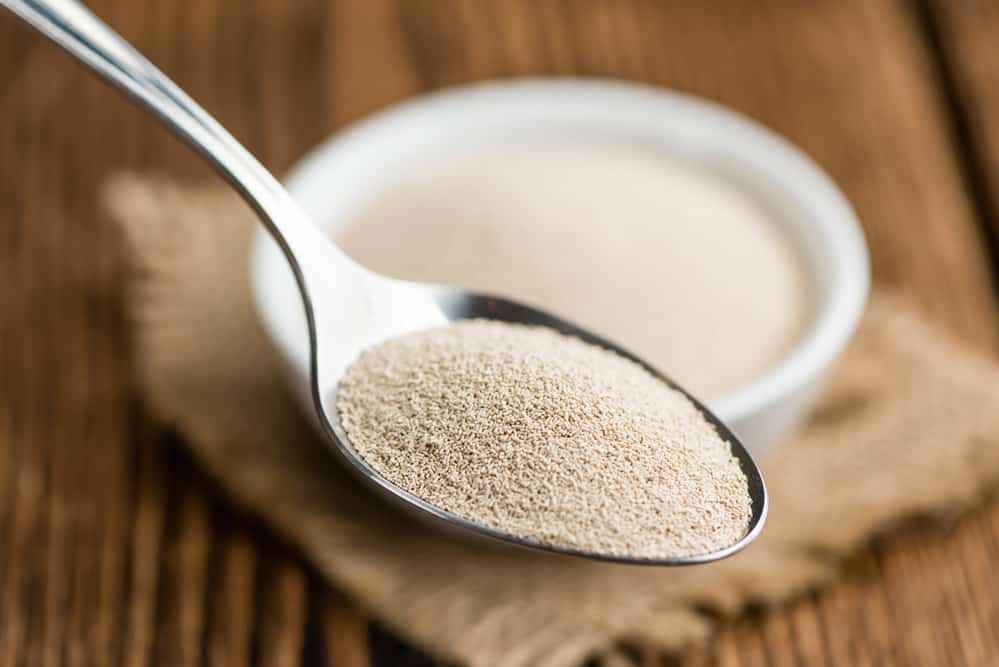
It comes in smaller granules that can be mixed directly into the flour without being dissolved in water first. This yeast type is quick-acting and reliable, making it a convenient option for those new to pizza-making.
Check out the article on active dry yeast vs instant yeast to learn more about their differences.
What Type of Yeast for Pizza Dough?
The best yeast for pizza dough largely depends on personal preference and the type of pizza you’re making. Each of these yeasts brings something unique to the dough. In the following sections, we’ll explore more about what makes each type special and why one might be considered the best pizza yeast over another in different circumstances.
Decoding the Best Yeast for Pizza Dough
Selecting the best yeast for pizza dough can feel a bit like deciphering an ancient language. However, understanding the key elements of yeast and how it affects your dough can guide you toward making the best choice.
The Role of Yeast in Pizza Dough:
Yeast plays a fundamental role in pizza dough making. As it consumes the sugars in the flour, it produces carbon dioxide, gas, and alcohol. The gas gets trapped within the dough’s elastic gluten network, causing the dough to rise and creating its characteristic airy texture. The alcohol and other byproducts of fermentation contribute to the dough’s flavor.
When you’re making pizza dough, it’s crucial to strike a balance. Too much yeast or too long a fermentation period can produce a strong, yeasty flavor that overpowers the other pizza ingredients. On the other hand, too little yeast or too short a fermentation period can result in a dense, flat crust without much flavor.
Criteria for Selecting the Best Pizza Dough Yeast
When deciding on the best yeast for pizza, you need to consider several factors:
Leavening Power
Some yeasts work faster than others. Instant yeast, for example, ferments more quickly than active dry yeast or fresh yeast. If you’re in a hurry, instant yeast may be the best pizza dough yeast for you.
Flavor
The different types of yeast can impart different flavors to your dough. Fresh yeast is often said to give a more robust flavor than dry yeast, although this can also depend on the fermentation time.
Ease of Use
Instant yeast can be mixed directly into the flour, making it very convenient. Active dry yeast needs to be dissolved in warm water first, and fresh yeast can be a little trickier to handle due to its crumbly texture.
Availability
Not all types of yeast are readily available in all areas. In many places, active dry yeast is the most commonly found in supermarkets.
Shelf Life
Dry, active, and instant yeast has a longer shelf life than fresh yeast and can be stored in the pantry. On the other hand, fresh yeast must be kept refrigerated and used within a relatively short time.
Understanding these factors and considering what is most important for your baking conditions and the style of pizza you wish to create will help you decide on the best yeast for your pizza dough.
Best Yeast for Pizza: A Comparative Analysis
With an understanding of the role yeast plays and the criteria for choosing yeast, it’s time to dissect the differences between fresh yeast, active dry yeast, and instant yeast. This comparative analysis should clarify the best yeast for pizza dough based on your baking needs.
Fresh Yeast Vs Dry Yeast for Pizza
Often used by professional bakers, fresh yeast is highly active and provides a rich, yeasty flavor that many people associate with traditional bakery products. It requires proofing in lukewarm water before being added to the other ingredients. However, its shelf life is short, typically only a few weeks in the refrigerator.
On the other hand, dry yeast (both active and instant) is more durable and lasts much longer.
Active dry yeast has a moderate fermentation speed and imparts a slightly milder flavor than fresh yeast. It needs to be rehydrated in warm water before use – a step known as proofing.
Instant yeast ferments more rapidly and doesn’t require proofing; it can be mixed directly into your dry ingredients. Its flavor is similar to active dry yeast. Instant yeast is great for quicker pizza recipes but might not provide the depth of flavor you’d get from a slow-fermented dough using fresh yeast.
Instant Yeast: The Unsung Hero?
While active dry yeast and fresh yeast have been the traditional choice for many bakers, instant yeast’s popularity has grown recently. Its convenience and reliability make it a strong contender for the best yeast for pizza, particularly for home bakers or those just starting their pizza-making journey.
Remember that while instant yeast can speed up the dough’s rising time, slower fermentation often produces more flavorful dough. Therefore, allowing your dough to rise slowly in the refrigerator, regardless of the yeast type used, can enhance your pizza’s flavor profile if time permits.
Ultimately, the choice between fresh yeast, active dry yeast, and instant yeast largely depends on your personal preference, the flavor profile you’re aiming for, the time you have for dough preparation, and the yeast’s availability. Stay tuned for the next section, highlighting some top yeast brands for pizza dough.

Highlighting the Best Pizza Yeast
Now that we’ve explored yeast types’ intricacies and differences let’s examine some of the best yeast brands available for making pizza dough. Remember, the “best” yeast is subjective and depends on your personal preference, the style of pizza you’re making, and the time you have for dough preparation.
SAF Instant Yeast
This brand is a favorite among many home bakers due to its reliability and ease of use. SAF Instant Yeast ferments quickly, doesn’t require proofing and is suitable for almost all types of pizza dough recipes.
SAF is easy to use (no proofing or pre-dissolving); it's fast-acting and long-lasting, continuing to work for hours longer than "rapid" yeast. It's absolutely reliable.
Fleischmann’s Active Dry Yeast
Fleischmann’s Active Dry Yeast is a widely available and reliable brand offering moderate fermentation speed and a balanced, unobtrusive flavor. It’s a great all-rounder for different types of pizza dough.
Fleischmann's Active Dry Yeast is a reliable and widely available yeast option. It offers moderate fermentation speed and a balanced flavor, making it an excellent all-rounder for various pizza dough recipes.
Red Star Fresh Yeast
If you prefer fresh yeast and have access to it, Red Star’s fresh yeast is a good choice. It provides a robust, traditional yeast flavor and excellent leavening, although it has a shorter shelf-life and requires refrigeration.
Cake Yeast, also known as wet, fresh, or compressed yeast, has been used for decades by veteran bakers and is still popular today.
Cake yeast is very perishable, requiring constant refrigeration to retain its freshness and activity. We recommend using it within 10 days of purchase.
Best Yeast for Neapolitan Pizza
When it comes to making traditional Neapolitan pizza, the choice of yeast becomes even more critical. Neapolitan pizza is known for its thin, soft, and chewy crust with a light, airy rim. Achieving the right texture and flavor requires a specific fermentation process in which yeast plays a vital role.
Historically, fresh yeast has been used in traditional Neapolitan pizza dough due to its strong leavening power and distinctive flavor. However, it’s essential to use it sparingly and allow for a slow, cold fermentation process (up to 24 hours in the refrigerator) to develop the dough’s flavor without it becoming too yeasty.
If you can’t find fresh yeast, a small amount of active dry yeast or even instant yeast can be used as a substitute for Neapolitan pizza dough. The key is to use less yeast and allow more time for cold fermentation, enhancing the dough’s flavor and texture while keeping it light and digestible.
Remember, achieving the perfect Neapolitan pizza dough takes practice, but with the right yeast and technique, you’ll be on your way to creating a pizza that would make any Neapolitan proud.
Why Do We Prefer Active Dry Yeast?
While all yeast types have their merits in pizza making, we lean towards active dry yeast as our preferred choice. One of the main reasons for this preference is its need for activation in warm water before use. This activation step is crucial to ensure the yeast is alive and well.
In our extensive experience of pizza dough making, we’ve found that a combination of active dry yeast and cold fermentation produces the best flavor. Active dry yeast lends a pleasing, balanced yeasty taste that doesn’t overpower the other flavors in your pizza.
When this is paired with a cold fermentation process, which slows down yeast activity and allows the dough to develop a deeper, more complex flavor profile over time, the result is truly exceptional.
This harmony of yeast and process leads to a pizza dough that is not only wonderfully textured but also rich in flavor, enhancing the overall pizza experience.
With instant yeast mixed directly into the flour, there’s a risk of not realizing the yeast is dead until it’s too late, and your whole pizza dough fails to rise. By using active dry yeast, you can prevent such disheartening situations, saving your ingredients and time.
Here’s What the PROs at Homemade Pizza Pro Use and Recommend
Red Star Active Dry Yeast is a trusted choice among bakers. It's known for its consistent performance, balanced fermentation speed, and subtly nuanced flavors it brings to pizza dough, contributing to a well-rounded and delicious crust.
Baking with the Best Yeast: Tips and Tricks for Using Yeast for Pizza
Now that we’ve chosen the best yeast for pizza, it’s time to learn how to use it effectively to create the perfect pizza dough. Let’s delve into some key tips and tricks for baking with yeast.
Proofing Yeast
If you’re using active dry yeast or fresh yeast, you’ll need to “proof” it, which means dissolving it in warm water (usually with a pinch of sugar) before adding it to your other ingredients. This step helps to activate the yeast and ensure it’s still alive and active. However, be sure to use warm, not hot water. Water that’s too hot can kill the yeast, while water that’s too cool might not fully activate it.
Proper Mixing
When using instant yeast, you can mix it directly into your flour. Ensure you evenly distribute the yeast to work its magic across the dough.
Fermentation Time
Regardless of the type of yeast you’re using, remember that the longer you let your dough ferment, the more flavorful it will be. While instant yeast can help your dough rise quickly if you’re in a hurry, slowing down the process and allowing the dough to rise slowly in the refrigerator will usually yield better results in terms of texture and flavor.
Refrigeration
Speaking of refrigeration, this is an excellent way to slow down the fermentation process and develop more flavor in your dough. This method is especially popular when making Neapolitan pizza dough.
Using the Right Amount
The amount of yeast you use will depend on the yeast type, the dough you’re making, and how long you plan to let it rise. Remember, using too much yeast can result in a dough that tastes overly yeasty while using too little can lead to a dense, flat crust.
Freshness Matters
Ensure your yeast is fresh and has been stored correctly. Fresh yeast should be refrigerated and used within a couple of weeks, while dry yeast can be stored in a cool, dry place for up to a year. If in doubt, proof your yeast to ensure it’s still active.
Baking the perfect pizza dough takes practice, but with these tips, you’re on your way to a beautiful homemade pizza. Whether you’re using the best yeast for Neapolitan pizza or creating your unique style, the joy of pizza-making is in the journey as much as the delicious outcome. So, have fun with it, and enjoy the process!
The Last Slice
From the subtle undertones of fresh yeast to the reliable convenience of instant yeast, selecting the best yeast for pizza dough can significantly elevate your pizza-making game. We’ve explored the nuances between fresh, active dry, and instant yeasts and how these differences can influence the texture and flavor of your pizza dough.
Remember that the best pizza yeast isn’t a universal choice – it heavily depends on your preference, the style of pizza you’re making, and the time you have for dough preparation. While fresh yeast is traditionally used for Neapolitan pizza due to its robust flavor and leavening power, active dry yeast and instant yeast also offer consistent and reliable results.
The journey to mastering pizza dough involves experimenting with different yeasts, honing your technique, and perhaps most importantly, enjoying the process. Pizza making is as much an art as it is a science. Remember, the secret to great pizza dough isn’t just in the yeast you choose but in the love and passion you put into creating your masterpiece.
Happy pizza-making, and here’s to finding your perfect pizza dough yeast!
Yeast Related Articles

10 Amazing Yeast Tips for Pizza Dough You Need to Master
the PROs
Pizza Dough Yeast Tips Are you looking for some pizza dough yeast tips? We’ve got plenty of information for you! …
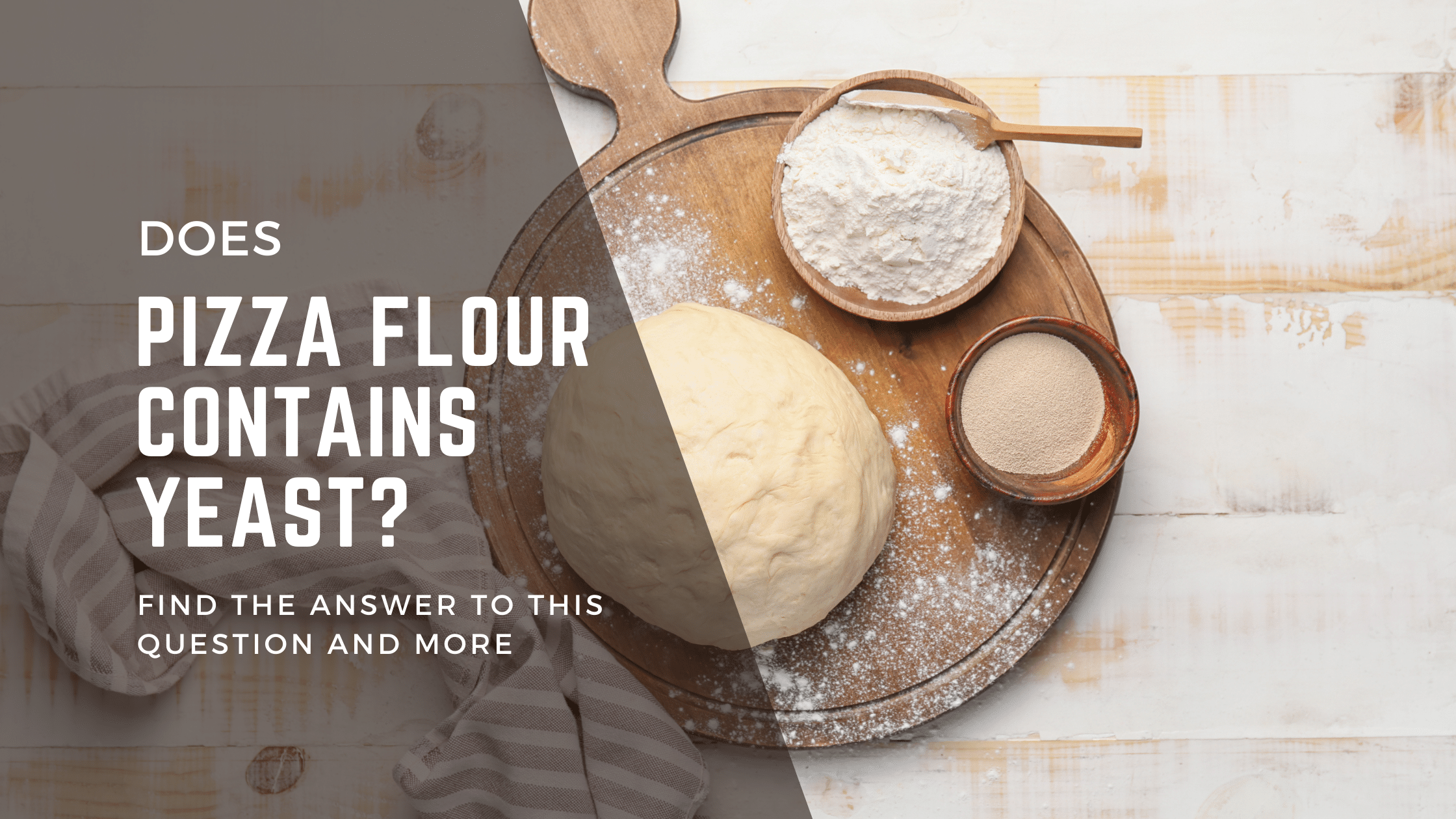
Does Pizza Flour Contain Yeast? Find What You Need to Know
the PROs
Ever wonder what gives pizza its mouth-watering, fluffy, and crisp crust? It’s all about the magic happening behind the scenes …
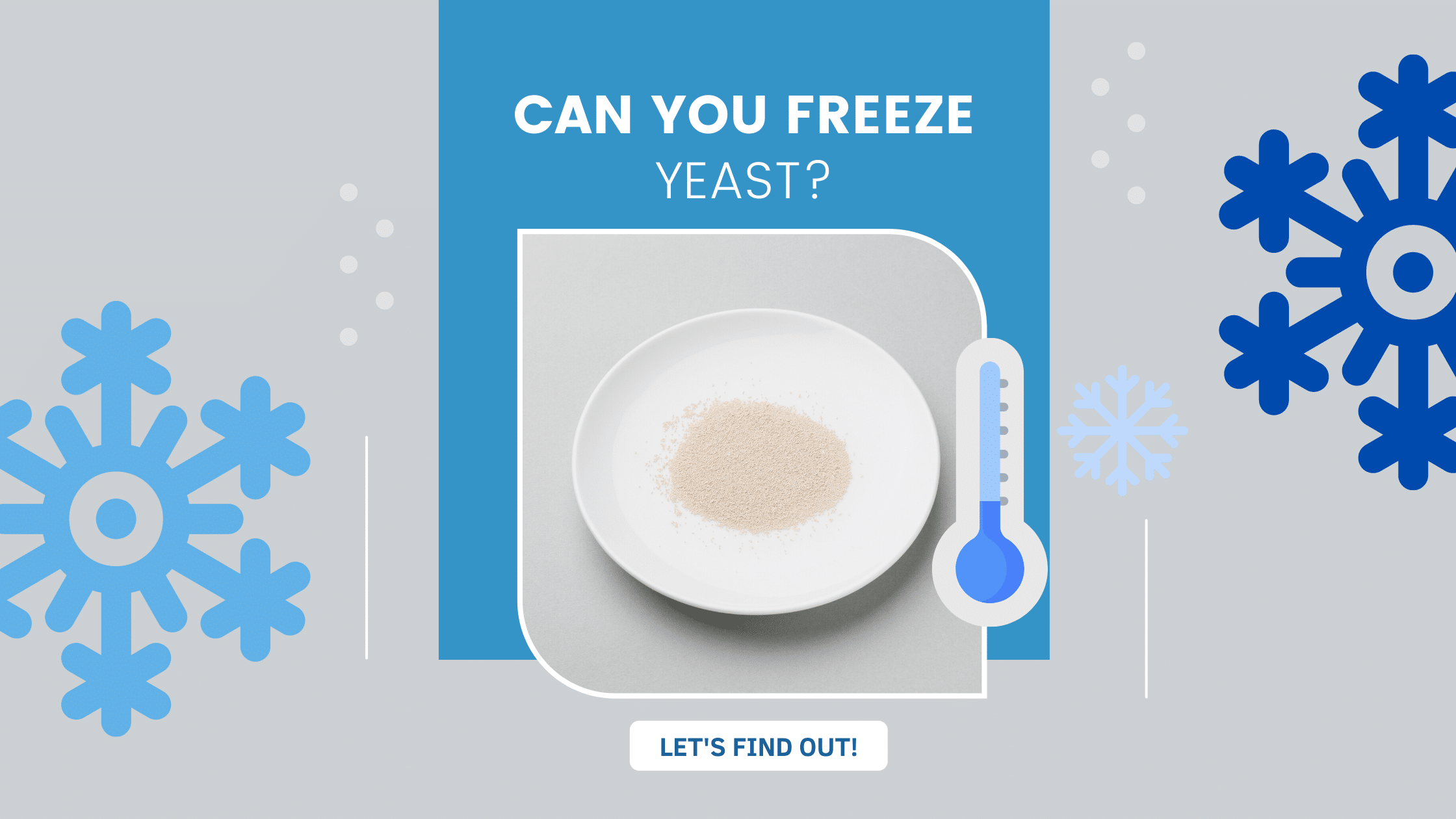
Can You Freeze Yeast? Find Everything You Need to Know
the PROs
“Can you freeze yeast?” – this question has crossed many home bakers’ minds. If you’ve been puzzled by this too, …

How Much Yeast is in a Packet? Easy Shortcuts (+Yeast Tips from the PROs)
the PROs
How Much Yeast is in One Package? Are you wondering how much yeast is in a packet? Easy! Each yeast …
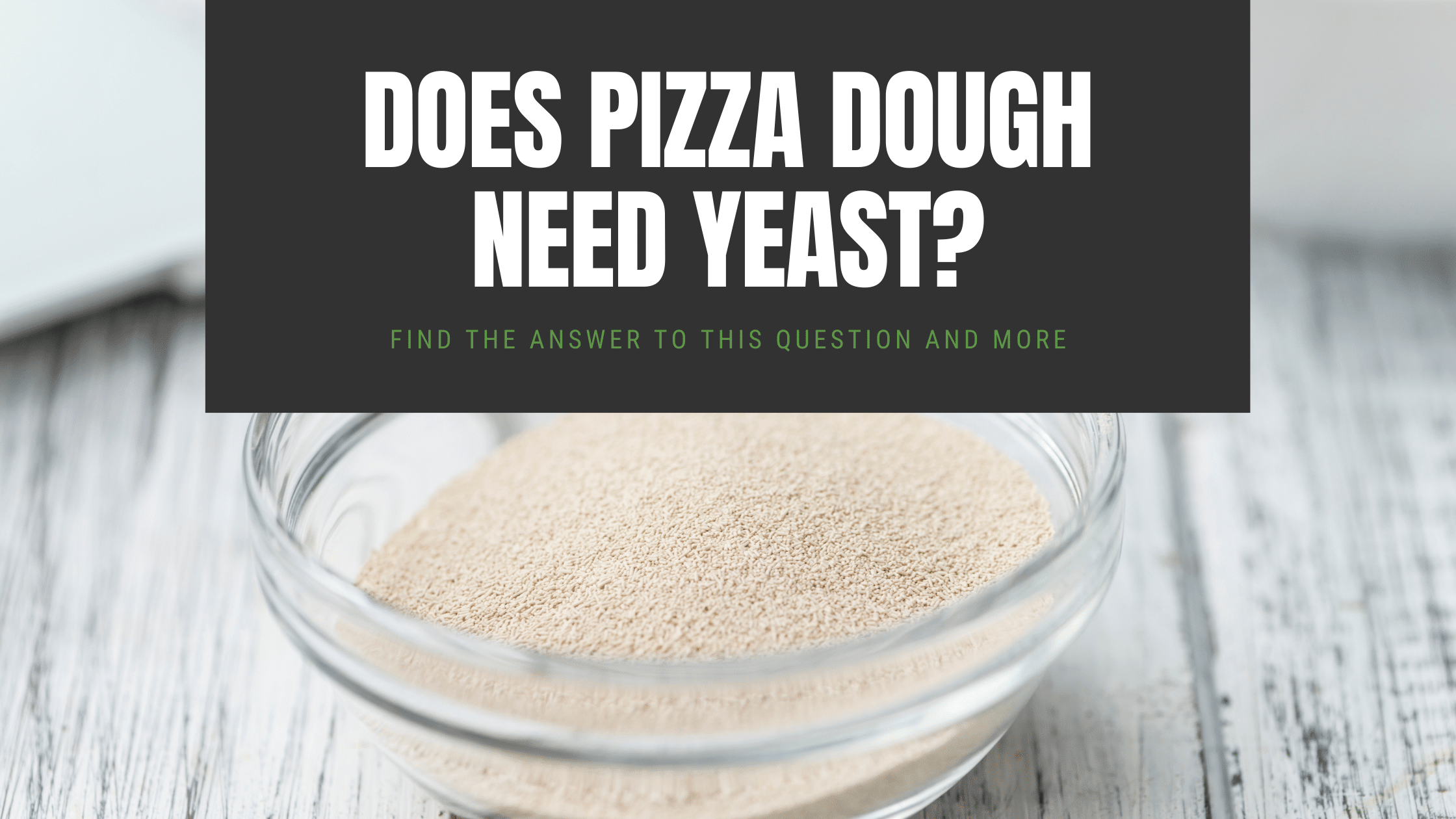
Does Pizza Need Yeast? You Bet! Here’s What You Need to Know
the PROs
Does Pizza Need Yeast? As a home baker, you might ask yourself if pizza needs yeast. Maybe you are feeling …

Active Dry vs Instant: Which is the Best Yeast for Pizza?
the PROs
In this article, we will help you understand the difference between Active dry yeast and Instant and let you know which one is right for homemade pizza. Find which is the best yeast for pizza and why.

Yeast for Pizza Dough: Your Key to Creating Irresistible, Airy, and Flavorful Crust”
the PROs
Most certainly, you read about yeast before or at least have seen the various yeast packets at the supermarket, not knowing the difference between them.
Enjoy!
Not a PRO? Not a Problem!
Take a pizza class to bring your pizza skills to the next level,
so you can be a PRO!
Related Posts

Costco Pizza Delivery: Find How You Can Get It Now!
the PROs
People go to Costco’s food court for many different reasons, but the cheesy slice of pizza they serve is among …

Pizza for Beginners: Don’t Buy Pizza, Make It! Here’s How to Get Started!
the PROs
You have this idea that you want to make pizza at home as opposed to ordering it, but where do you start? Don’t worry! Here you will find answers and directions to all your questions.

Pizza Toppings Under Cheese or Over Cheese? [Why the Order Matters]
the PROs
Is Pizza Cheese on Top or Bottom? Hey pizza lovers, are you wondering if you should layer pizza toppings under …
Newsletter
Subscribe to our Recipe of the Week newsletter and receive our partners’ latest recipes, tips, and discount offers.
Keep in Touch!
